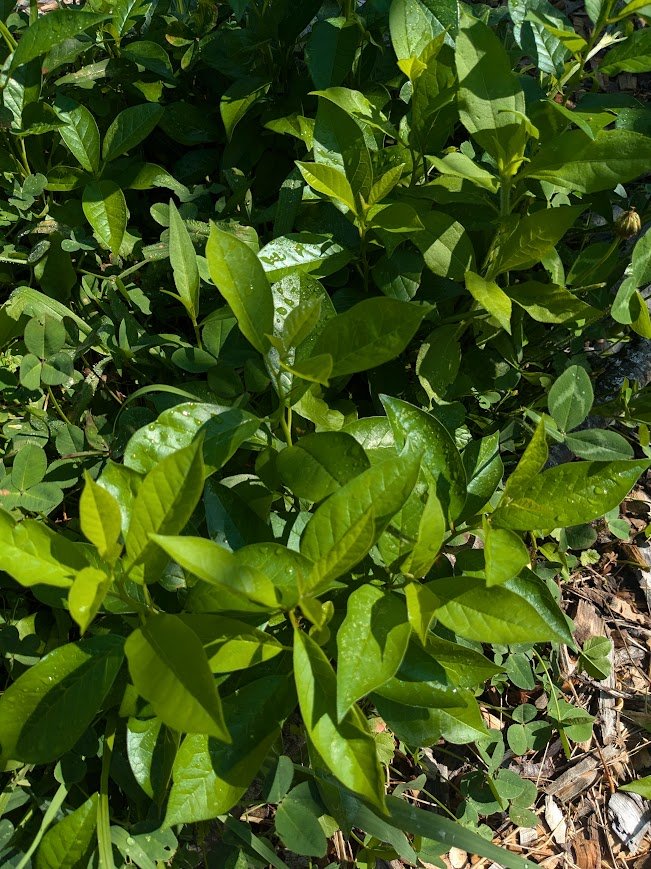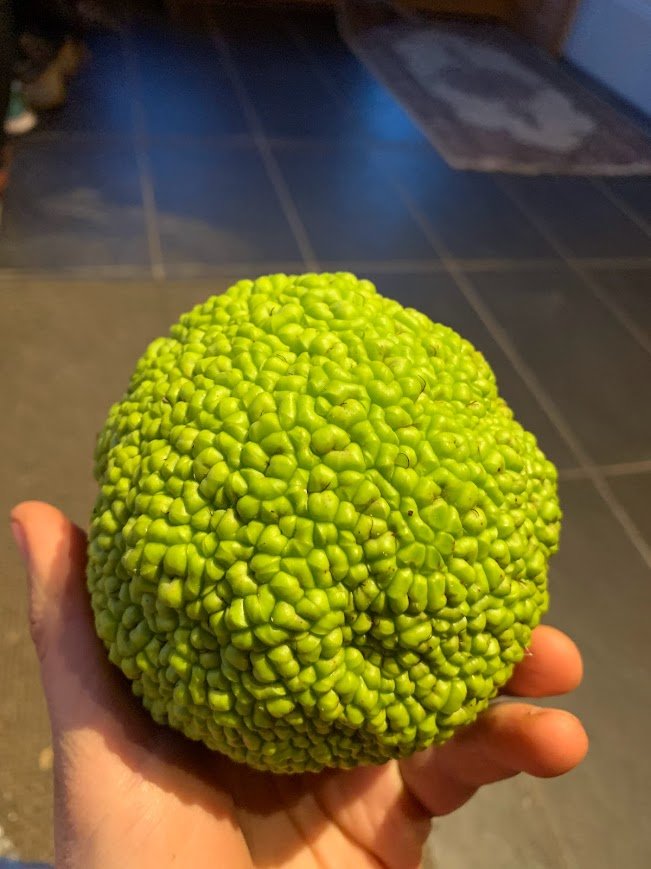Osage Orange - Bare Root Tree
6-12” Bare Root Tree
(Maclura pomifera)
As its name suggests this tree is native to the south-central United States, but has been widely spread by humans for its many uses. Its large thorns and tendency to sprout and grow interwoven makes it very useful as a hedge, which gives this tree another common name of “Hedge Apple”. The wood is also extremely strong, has a gorgeous yellow coloring, and is rot resistant which lends itself well to use in tools. When dried, the wood also burns hot and long which makes this an excellent tree for firewood coppicing. The large beautiful fruits are inedible to humans and are mostly eaten by squirrels and the hungriest of livestock, but they are still quite something to look at!
While slow to establish, the osage orange can reach heights of 50 ft under ideal conditions.
Hardiness: Zone 4-9
Soil: Dry to moist
Light: Full sun
6-12” Bare Root Tree
(Maclura pomifera)
As its name suggests this tree is native to the south-central United States, but has been widely spread by humans for its many uses. Its large thorns and tendency to sprout and grow interwoven makes it very useful as a hedge, which gives this tree another common name of “Hedge Apple”. The wood is also extremely strong, has a gorgeous yellow coloring, and is rot resistant which lends itself well to use in tools. When dried, the wood also burns hot and long which makes this an excellent tree for firewood coppicing. The large beautiful fruits are inedible to humans and are mostly eaten by squirrels and the hungriest of livestock, but they are still quite something to look at!
While slow to establish, the osage orange can reach heights of 50 ft under ideal conditions.
Hardiness: Zone 4-9
Soil: Dry to moist
Light: Full sun
6-12” Bare Root Tree
(Maclura pomifera)
As its name suggests this tree is native to the south-central United States, but has been widely spread by humans for its many uses. Its large thorns and tendency to sprout and grow interwoven makes it very useful as a hedge, which gives this tree another common name of “Hedge Apple”. The wood is also extremely strong, has a gorgeous yellow coloring, and is rot resistant which lends itself well to use in tools. When dried, the wood also burns hot and long which makes this an excellent tree for firewood coppicing. The large beautiful fruits are inedible to humans and are mostly eaten by squirrels and the hungriest of livestock, but they are still quite something to look at!
While slow to establish, the osage orange can reach heights of 50 ft under ideal conditions.
Hardiness: Zone 4-9
Soil: Dry to moist
Light: Full sun




